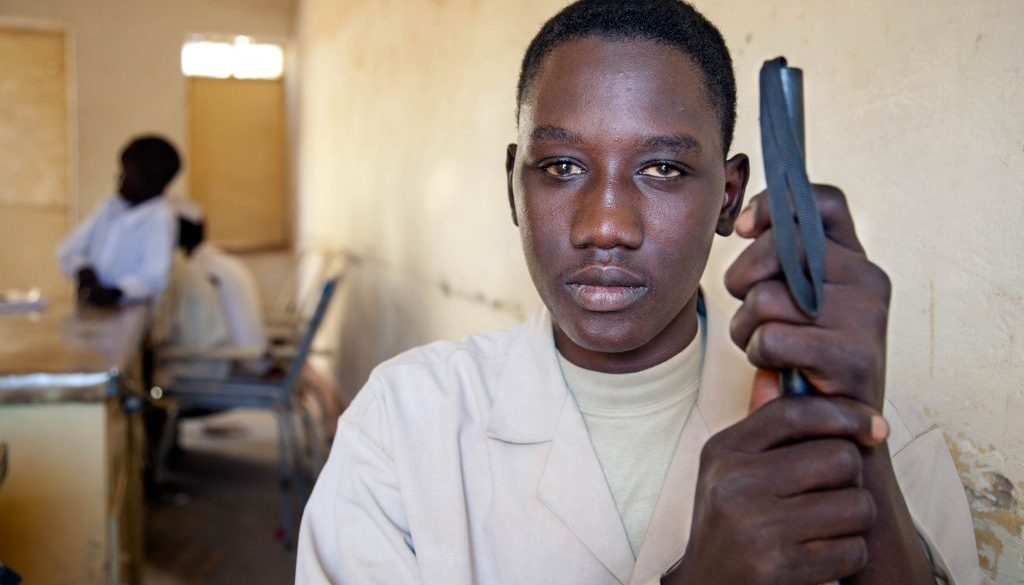Health service access and COVID-19 vaccination through the lens of persons with disabilities
COVID-19, the modern world’s first pandemic has wrought many negative effects. Everyone around the world has been dealt a bad hand. However, some people have had their circumstances profoundly aggravated by COVID-19. Lynda Keeru and Kate Hawkins explore how COVID-19 and subsequent vaccine rollout has affected persons with disability. This is a summary of a workshop (Vaccine Distribution and Disability Inclusion) organized by the CORE Group’s Disability Inclusive Health TAG.
There’s estimated one billion people in the world that live with disabilities; 80% of whom live in low- and middle-income countries. The speakers in this webinar, gave insight into how to build an inclusive COVID-19 response particularly when it comes to the distribution of vaccines.
Disability and health services
Mohammad Iqbal from Pakistan explained that persons with disabilities are a very vulnerable group when it comes to COVID-19. He cited a study that revealed that the COVID-19 mortality rate is six times higher for people living with disabilities. Persons with disability are often ‘invisible’ in big government programmes and initiatives which impedes their ability to access services. Stigma associated with disability is also a contributory component of their vulnerability.
The COVID-19 response has obstructed and disrupted routine health services in hospitals making it especially difficult for persons with disabilities that require regular medical checkups or attention. Women and girls face even greater challenges in trying to access sexual and reproductive health services.
There’s need to not only include persons with disabilities in planning processes, but to also include people with the lived experience of disabilities in leadership positions such as in the medical professions, research, public health planning and policy-making.
Disability and vaccination
Juliet Ajok explained that shortages of vaccines means that in many settings they are being allotted on a first come first served basis. This causes challenges to persons with disability because they may struggle with issues such as poor transportation which renders them automatically back of the queue.
Speaking from her experiences of leading the COVID-19 Vaccine Dashboard for People with Disabilities, Bonnielin Swenor explained that persons with disability should be included in all stages of developing policies and in the public health response of the vaccine rollout particularly in leadership roles.
Disability data must be collected as there cannot be accountability without the right information. This should be done in a standardized way in order to be able to report up and track vaccine allocation for people with disabilities; and prioritize them in public health information systems.
Finally, there’s need to think about how to balance lack of evidence with equity. It is important to realize that there is never going to be a time when there will be ‘enough evidence’ to make classic public health decisions for the disability community. This is because this group includes many other smaller groups including people with rare diseases. To reach a level of evidence that is considered ‘robust’ particular sample sizes are required, and so some people will always be left behind. Data and evidence only will never lead to the inclusion of all.
Using Uganda as an example, Juliet Ajok explained that persons with disability we to some extent a priority and disability inclusion efforts had started and were gaining momentum. Uganda has made certain commitments on the rights of persons with disabilities and supported affirmative action in legislation and political representation at all levels. However the the good intentions reflected in the legislation and policies need reinforcement; particularly in the monitoring of activities and ensuring compliance at the lower levels of the health system.
In order to ensure prioritization at the national level, the Ministry of Health should be tasked with ensuring inclusivity for persons with disability in health services. Disaggregated data is central to this. In Uganda, most of the data available is donor driven and not circulated widely to local health planners and the various departments at the national level.
Work at the facility level is required to reduce barriers to services and to educate health workers on the rights of persons with disabilities. Where there are shortages of health workers quality services become more difficult as patient numbers mean that there is little time to attend to people with more particular or complex requirements. Health care workers are mirrors of their societies and therefore can have stigmatizing and prejudiced attitudes.
Recommendations
Vaccination locations should be accessible. Accessibility includes easy-to-read formats, sign language interpretation and more patience from health workers. People with disabilities can’t queue in the long lines for the vaccines and therefore, there’s need to strategize how to reach them. Social mobilization should target people with disabilities and persons with disabilities should be included in the digital vaccination drive so that they are more inclusive and conducive. Society needs to provide a more inclusive environment for persons with disabilities and this is instrumental in enabling people with disabilities to transcend COVID-19.
Contributors:
Mohammad Iqbal | Disability, Gender and Age Specialist, Federation Handicap International Pakistan
Dr Bonnielin Swenor | Founder and Director, Johns Hopkins Disability Health Research Center
Dr Juliet Ajok | Child Health Technical Advisor, USAID RHITES-EC

